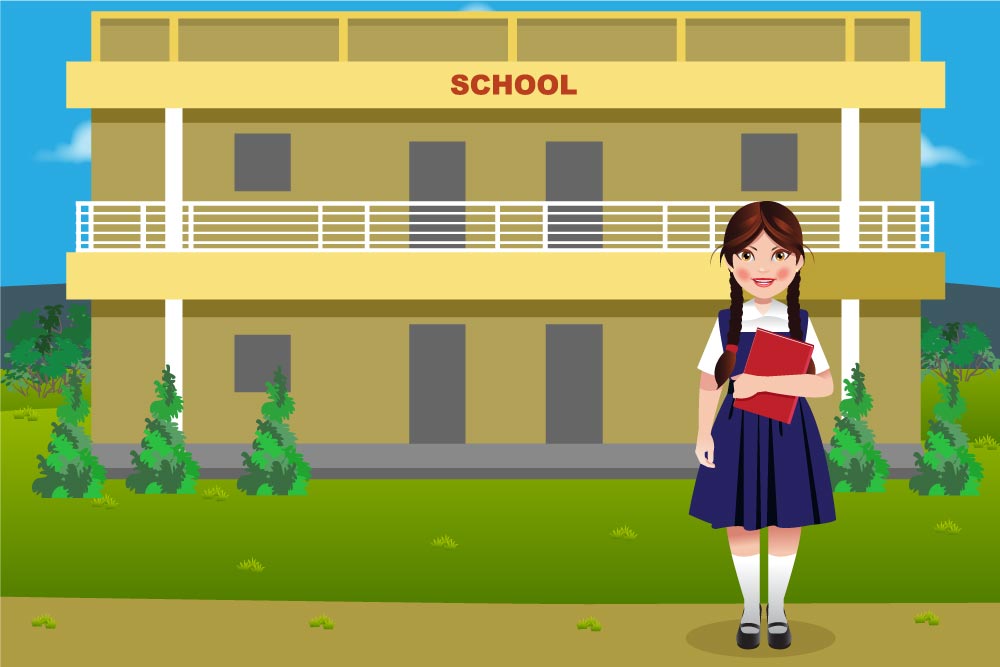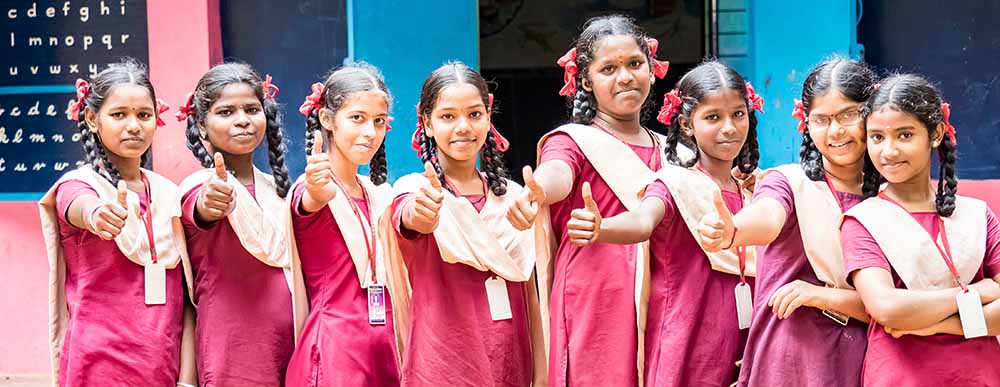Education is undoubtedly one of the stepping stones to a more independent and empowered life. However, many do not get the opportunity to such empowerment. In a society where women often do not get enough opportunities and face a gender bias, education for girls becomes of greater importance. Here are five things you should know about education and the Indian girl child.
1. The First Girls’ School

The problem of gender bias has been prevalent in India since the 1800s. Boys are often given more importance over girl children for an opportunity to go to school. This slowly started to change with more and more women realising the importance of education. It was in 1848 that Savitribai Phule and her husband, social reformer Jyotirao Phule started what is believed to be India's first school for girls in the city of Pune in Maharashtra. With this she made history by becoming the first female teacher in India, paving the way for gender equality for countless more women and girls.
2. Literacy Amongst Children

As per the Census Report of 2011, the literacy rate of girls was 65.5 per cent, whereas the literacy rate for boys was 82.1 per cent. As per census reports, the female literacy rate during the period 1991-2001 increased by 14.87 per cent whereas the male literacy rate rose by 11.72 per cent. The increase in female literacy rate was 3.15 per cent more compared to the male literacy rate. These statistics clearly show the role that gender plays in education, but also that the growth in female literacy is higher in females as compared to males. The state with the highest percentage of female literacy was Kerala at 91.98 per cent as per the 2011 Census Report. The male literacy rate in the state was 96.02 per cent.
3. Literacy Laws

The obvious problem of literacy and education in India brought about the enactment of the Right to Education Act 2009, also known as the RTE Act 2009. As per the act, the Government must provide free and compulsory elementary education to every child, in a neighbourhood school within 1 km, up to class 8 in India. This also includes provisions of textbooks, uniforms, stationery items and special educational material for children with disabilities.
4. Government Schemes

Even after over ten years of the enactment of the law, nearly 40% of adolescent girls in the age group of 15-18 years do not attend school and about 30 per cent of girls have never been to school. These figures are as per a 2020 report by the Right to Education Forum and Centre for Budget Policy Studies with support of the World Bank and UNICEF. This brings attention to various government schemes put in place to promote and incentivise girl child education in a way that the imposition of law may be unable to do. One of the most known schemes of all is the Beti Bachao Beti Padhao scheme that aims at saving the girl child from social ills such as gender-based abortions and ensuring education and participation of the girl child. There are also financially favourable schemes like the Balika Samriddhi Yojana, which is a scholarship scheme aimed to provide financial support to young girls and their mothers who are below the poverty line. There is also the CBSE Udaan scheme for girls is administered by the Central Board of Secondary Education that focuses on increasing the enrolment of girls in prestigious engineering and technical colleges across India. To benefit girls belonging to the backward classes of India, The National Scheme of Incentive was launched and is currently managed by the Department of School Education & Literacy, Ministry of Human Resource Development, Government of India.
5. The Drop Out Issue

While helping more and more girls enrol for school and primary education is one solution, another major problem surfaces in the form of school dropouts. Even if girls are enrolled in higher numbers, a substantial number find it difficult to continue. The annual average dropout rate of girls in primary level is 4.14 per cent and the dropout rate in the upper-primary level is 4.49 per cent as per the District Information System for Education (DISE) Data, 2014-15. The average annual dropout rate of girls in the secondary level is 17.79 per cent and in the higher secondary level is 1.61 per cent (U-DISE Data, 2014-15). A lot of this has to do with long travel distances to schools in rural areas, lack of funds and social problems like early/child marriage.